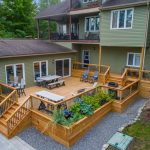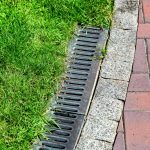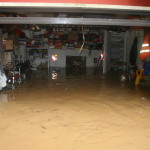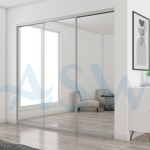How to Create a Low-Maintenance Garden in a Small Space

Dreaming of a garden but short on time and space? Creating a beautiful, low-maintenance garden in a compact area is achievable and incredibly rewarding. The beauty of small-space gardening lies in its simplicity – less weeding, targeted watering, and instant visual effect. Consider mini garden sheds for storing hand tools, pots, and soil without taking up too much of your precious garden area. This article shares practical tips, clever design ideas, and smart plant choices to help you create a thriving Australian garden.
Start with a Simple Plan
Before you pot a single plant, take stock of your site. Is it a sunny balcony, a shady side yard, or a mix of both? Does it get windy or afternoon heat? Knowing your microclimate helps guide your plant choices. Next, define your garden goals. Want a herb patch for your cooking? A private leafy nook for relaxing? Understanding your purpose keeps things simple and intentional.
Then, choose a theme that reflects your style—maybe a lush tropical vibe with ferns and palms, a neat minimalist layout with sculptural plants, or a rustic edible garden with herbs and compact veggies.
The goal is low-fuss satisfaction, so avoid overcomplicating your plan.
Choose the Right Containers and Layout
Your containers are more than just pots—they’re your garden’s foundation. Select ones that retain moisture, like self-watering containers, glazed ceramics, or breathable fabric grow bags. They cut down watering needs and keep roots happy.
To make the most of small spaces, go vertical. Hang baskets, install wall planters, or add tiered plant shelves for a touch of elegance.
A sturdy trellis can support climbers while freeing up ground space—mobile planters with wheels for chasing the sun or shifting things around as needed.
Arrange plants in groups based on sunlight and water needs to streamline care.
Pick Low-Maintenance Plants That Thrive in Small Spaces
The right plants are the secret to a low-effort garden. Succulents like jade, echeveria, and sedum thrive in containers and don’t demand much water. If you want functional beauty, go for compact edibles like rosemary, thyme, chives, and cherry tomatoes—they’re hardy and ideal for pots.
Native Australian plants are a wise choice too; they’re adapted to our climate and typically require less water and maintenance. Consider dwarf varieties or slow growers to avoid constant trimming. Perennials are especially useful—they keep coming back without yearly replanting.
Avoid fussy flowers that bloom briefly and require regular deadheading to maintain their appearance. Instead, aim for a mix of textures, colours, and structure. This variety keeps your garden interesting without needing constant tweaks.
Top Tip: Look for terms like ‘drought-tolerant’, ‘low water needs’, ‘container-friendly’, and ‘compact growth’ on plant labels.
Smart Watering and Soil Solutions
Watering is one of the biggest chores in gardening, but you can automate and simplify it. Use a good potting mix with water-retaining crystals or compost to boost moisture retention.
Top pots with mulch—like bark chips or pea straw—to lock in water and regulate soil temperature.
For multiple containers, install a basic drip irrigation kit that connects to a tap timer—it’s easier than it sounds and does the work for you. If that’s too much, self-watering pots are a great alternative and perfect for balconies or renters.
Watering at the right time—early morning or late afternoon—also helps reduce evaporation.
A smart call is to use a moisture meter to prevent overwatering, auto-timers for irrigation, a small watering can with a long spout, and a scoop for adding mulch or soil. These tools save time and reduce effort while keeping your garden healthy.
Design for Easy Upkeep
Low-maintenance gardening starts with clever design. Group plants with similar light and water needs together so you’re not juggling different care routines. Make sure you can easily access all areas without tripping over pots—this encourages quick spot maintenance.
Choose trailing plants like native dichondra or creeping thyme as natural weed suppressants. They fill gaps, soften hard edges, and reduce bare soil that attracts weeds.
Focus on structure and texture instead of chasing blooms—think strappy foliage, bold shapes, or silver-toned natives that look great all year. Plants like lomandra or dwarf flax lilies provide style without the fuss.
Top Tip: Think in textures and foliage rather than blooms – it’s easier to manage and just as beautiful.
Final Touches: Décor, Wildlife, and Atmosphere
Add some finishing touches that make your garden a place you actually want to spend time in. A shallow birdbath to attract colourful native birds while adding soothing sounds, and dynamic life to your peaceful garden environment, a bee hotel using natural bamboo tubes or drilled wood blocks to actively support local pollinators while needing absolutely zero ongoing maintenance from you, or insect-friendly plants which will invite local wildlife and support pollination.
Soft solar lighting or string lights can change the atmosphere after sunset without the need for complicated electrical wiring or increased utility bills, making it perfect for winding down with a cup of tea or a glass of wine. If space allows, add a small stool, bench, or even a folding chair so you can sit among your greenery.
Keep décor minimal to avoid clutter—remember, this is a low-effort oasis, not a garden centre showroom. Select pieces that serve as both storage and planters to maximise space. Whether it’s a nook for morning coffee or a spot to read in the afternoon sun, make it a place that lifts your spirits.
You don’t need a big yard or hours of spare time to enjoy the rewards of gardening. With the right plants, containers, and layout, you can create a peaceful, low-maintenance sanctuary in even the smallest of spaces. Start this weekend: pick one corner, choose a few hardy plants, and get mulching. Small efforts add up, and before long, you’ll have your very own stress-free slice of green paradise. Picture yourself in six months, sipping morning coffee surrounded by thriving plants that practically care for themselves.






























